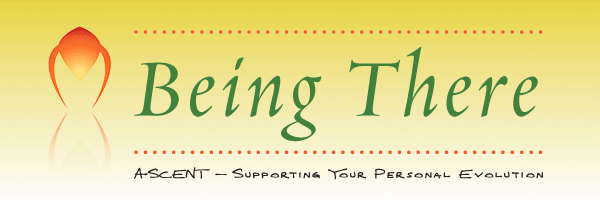“I try to concentrate, but my mind jumps all over the place.”
“I start working on an important project… and the next thing I know I’ve actually gotten up, wandered away, and gotten involved in something else.”
“I set out with good intentions, but by the mid-morning I’ve already blown them.”
“Why can’t I hold a focus? Why can’t I stick with things?”
Mindfulness Training

Most of us have a hard time managing our mind. Which is why we can benefit by developing the meditation practice called mindfulness training.
Mindfulness training deepens and strengthens awareness. To become more mindful we practice by focusing our attention on a single object or thought — then gently, steadily, allow it to rest there.
Here is a simple exercise to get you started:
- Notice your breath as it moves in and out your nostrils.
- Focus gently on the tip of your nose and begin to count breaths. (Each cycle of inhalation/exhalation counts as one.)
- Continue focusing on your breath and count to ten.
Your mind is likely to wander by the time you’re up to just 3,4, or 5 counts. That list of daily errands, pieces of conversation — pretty much everything is likely to fall into your thought-stream and float past, calling for your attention.
But here’s the important part. Notice the aspect of your mind that is noticing the distraction. You’ve just met your silent witness — the still part of your mind that brings perspective and insight.
- Each time your silent inner witness realizes your mind has wandered from its focus, gently return it — in this case, to your breathing.
This exercise demonstrates the interplay of mindfulness training which can, in time, build mental strength, focus, and endurance — and open up creativity and insight when you need them.
The great thing is, you can practice mindfulness wherever you are. For instance: When you’re vacuuming the house, notice the different sounds your vacuum cleaner makes as it moves over different textures of flooring, from hardwood or tile to carpeting. Then notice the silence that contains the noise. (This will take some practice.)
When you’re in a conversation, notice how you tend to get caught up in your own thoughts while the other person is speaking. Gently re-focus on what they’re saying, their facial expressions, the sound and tone of their voice. (This will also take practice.)
Virtually any moment and anything you are doing can be an opportunity to practice mindfulness training — a chance to deepen and strengthen your mind and become more fully alive in the moment.

Andrew McAuley travels nationwide, leading training/workshops in yoga and massage. Read more about Mindfulness at andrew-mcauley.com
Mental concentration. Sticking with our intentions. The secret to owning a mind that can handle the powerful, creative focus you need lies in a practice known as mindfulness training.
Mindfulness — a potent tool for personal development — is the ability to direct all our mental energies into any given task we’re doing. This may be a physical workout, a creative project, being fully “present” in a relationship, or making the better choices for healthier living.
The opposite of mindfulness (which most of us can identify with more easily) is inattentiveness, losing our point, drifting away while others are speaking. The result of mental drift is ineffective workouts, creative ideas that go nowhere, flatness in relationships, intending to make better choices — say, eating better — but then finding ourselves with a mouthful of junk food and wondering why we’re doing this to our body and our health again.
Whatever you’re involved in, directing the full potency of your mental energies into your effort makes a huge difference in the quality of what you’re doing and how you live. In terms of endurance, it also gives you the ability to stay on-task longer.
Consider the good stuff that happens to your brain when you practice mindfulness, and you’ll understand why creatives, athletes, lovers, and those in care-giving or self-care benefit greatly from mindfulness training.
First, mindfulness is the result of combining two types of mental energies.
One is the state of intense focus — the kind of mental energy we generate when, for instance, we’re adding a long column of numbers. This is called convergent thinking, because our attention is focused like lasers converging on a single point. The second is a state of more open awareness — the kind of relaxed and fluid energy we generate when we daydream.
Combine these two types of mental energy — actually, two types of brainwaves — and your mind can stay alert and focused for longer periods of time. Your brain becomes a powered-up battery. And at the same time, you tap the creative parts of your brain — those that contain your gifts of imagination, perspective, and insight.
To experience this current of mental energy, try the simple steps for mindfulness training laid out by Ascent’s friend and associate, Andrew McAuley, in his column, Be In Flow.
Practice for just 15 minutes a day this month and watch your mind become a lean, mean, creatin’ machine.
It’s Your Life. Be there.




 James Ryan, author of Adirondack Wildlife: A Field Guide. James is a naturalist and biology professor who will “open up” the Adirondacks for us with guided nature walks.
James Ryan, author of Adirondack Wildlife: A Field Guide. James is a naturalist and biology professor who will “open up” the Adirondacks for us with guided nature walks. The Summit is hosted by The Woods Inn, a restored 1898 facility in Inlet, that features gourmet dining and Adirondack-style accommodations, with easy access from central New York.
The Summit is hosted by The Woods Inn, a restored 1898 facility in Inlet, that features gourmet dining and Adirondack-style accommodations, with easy access from central New York.